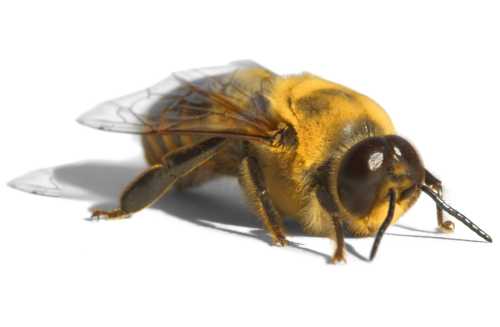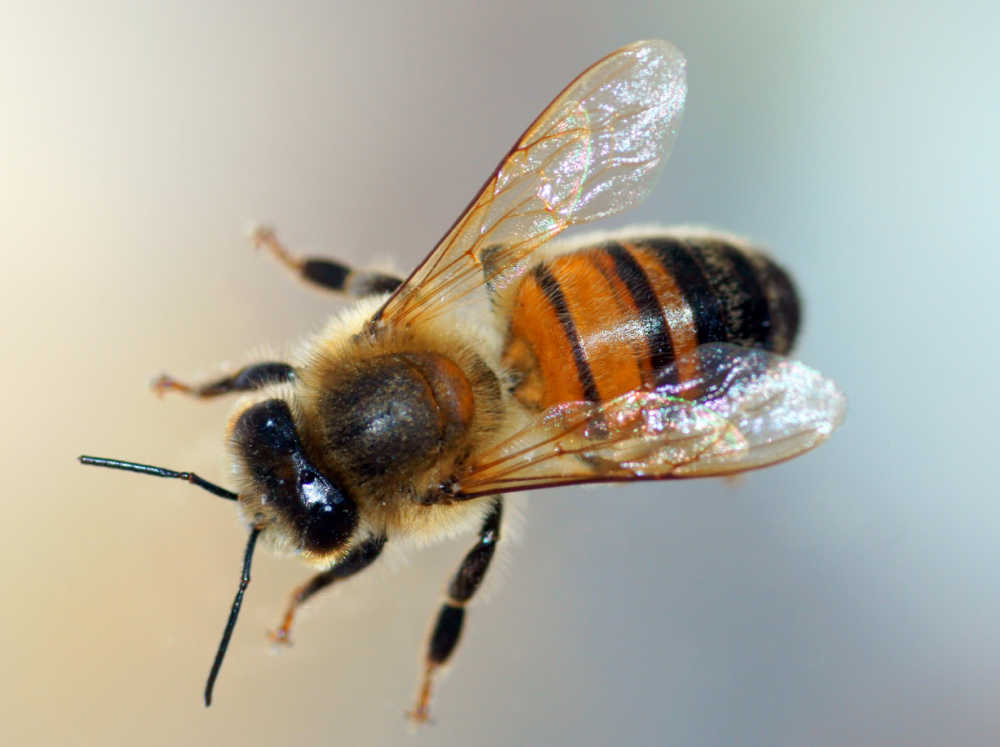
In the fascinating world of bees, there exists a unique role played by male bees, also known as drones, within the hive. While worker bees and the queen bee often steal the limelight, it is the drones who hold a crucial responsibility. Despite their limited lifespan and lack of stingers, drones contribute significantly to the hive’s survival through their participation in the mating process. Join us as we unlock the secrets of drones and explore their vital role within the bustling bee society.

The Role of Drones in the Bee Hive
Bees are fascinating creatures that play essential roles in agriculture and the ecosystem. While most people are familiar with worker bees and their crucial tasks, such as collecting nectar and building the hive, they may not be as familiar with the role of drone bees. In this article, we will delve into the world of drone bees and explore their unique characteristics, behavior, and importance in the survival of the colony.
Drone Bees: Definition and Characteristics
Drone bees are male bees that are born from unfertilized eggs. Unlike worker bees, they do not possess the capability to sting. Drone bees are slightly larger in size than worker bees and have bigger eyes. These eyes are specially adapted to help them navigate and locate potential mates during their mating flights. Another distinctive feature of drone bees is their lack of pollen baskets on their legs, as they do not participate in foraging or pollen collection like their female counterparts.
The Life Cycle of a Drone Bee
The life cycle of a drone bee begins when an unfertilized egg is laid in a queen cell. After a few days, the egg hatches into a larva and is fed by worker bees. As the drone larva grows, it goes through several molting stages until it eventually pupates. The drone bee remains inside the pupal stage for around 14 days. Once fully developed, the drone bee emerges from its cell.
However, the fate of drone bees is rather unique compared to that of worker bees. While worker bees can live for several weeks or even months, the lifespan of a drone bee is significantly shorter, usually lasting only a few weeks. This limited lifespan is primarily due to the energy-intensive activities associated with mating and the fact that they are expelled from the hive once their reproductive purpose has been fulfilled.
The Unique Characteristics of Male Bees
The Physical Appearance of Drone Bees
Drone bees have distinct physical characteristics that set them apart from worker bees and queen bees. They have larger bodies, with stout and rounded abdomens. One of the most striking features of drone bees is their large compound eyes, which enable them to spot potential mates during their mating flights. These compound eyes cover most of their head and provide them with enhanced visual capabilities.
Drone Bee Behavior and Activities
While worker bees are busy collecting nectar and pollen, drone bees have a rather laid-back lifestyle within the hive. They do not engage in foraging or any other hive tasks like building honeycombs or caring for the brood. Instead, their primary focus is on one crucial activity: mating.
Drone bees will often gather in drone congregation areas, or “DCA,” where they fly in large groups and wait for the arrival of a virgin queen. Once a queen arrives, the drones compete to mate with her. This behavior is known as “drone swarming.” It is interesting to note that drone bees do not compete with one another for access to the queen. Instead, they rely on the queen’s choice, and only the strongest and fittest drones are successful in mating.
Reproductive Function of Drone Bees
The Mating Process of Drone Bees
The primary reproductive function of drone bees is to mate with virgin queens from other colonies. Once a drone successfully mates with a queen, it dies shortly after due to the physical impact of mating.
During the mating process, the drone mounts the queen mid-flight and inserts his endophallus into the queen’s reproductive tract. This act is often referred to as “mating in the air.” After mating, the drone’s endophallus becomes detached from its body, resulting in the death of the drone. The separated endophallus remains in the queen’s reproductive tract, where it serves to prevent other drones from mating with her.
The Role of Drone Bees in Colony Genetics
Drone bees play a crucial role in maintaining genetic diversity within the colony. As drones mate with queens from other colonies, they introduce genetic variation into the gene pool of the hive. This genetic diversity is essential for the survival and adaptability of the colony, as it helps to increase resistance to diseases and other environmental challenges. Thus, the reproductive function of drone bees ensures the genetic health and vitality of the bee population.
Drone Bees and Colony Survival
Drone Bees and Colony Communication
While drone bees do not actively participate in tasks vital for the immediate survival of the colony, they are not completely disconnected from the social dynamics within the hive. They engage in communication with worker bees and other drones through a variety of signals and pheromones.
Drone bees produce specific pheromones that are used to signal their presence and readiness for mating. These pheromones are emitted from their mandibular glands and can attract potential mates. Additionally, drones also produce pheromones that signal their social status within the hive. These pheromones influence the behavior of worker bees and the overall coordination and functioning of the colony.
The Significance of Drone Population Size in a Hive
The presence of an optimal number of drones in a hive is crucial for the colony’s reproductive success. If the drone population is too small, it can negatively impact the chances of successful mating and genetic diversity. Conversely, an excessive drone population may strain the resources of the colony and decrease its overall efficiency. Therefore, maintaining a balanced drone population is vital for the function and reproductive health of the hive.
Drone Behavior and Hive Health
Drone Behavior in the Hive
While drone bees are integral to the mating process, their behavior within the hive differs significantly from that of worker bees. Drones are not involved in tasks such as brood care or hive maintenance. Instead, they spend their time resting and waiting for opportunities to mate.
Drone bees are also known for their congregations, where groups of drones gather outside the hive and engage in social bonding. These congregations, often occurring in the late afternoon, serve as a meeting point where drones from various colonies gather, interact, and exchange genetic material. The congregations are thought to facilitate the selection of healthy and high-quality drones, which ultimately contributes to the overall fitness of the colony.
The Impact of Drone Health on Colony Fitness
The health of drone bees directly affects the fitness and survival of the colony. Healthy drones are more likely to successfully mate with queens and pass on desirable genetic traits. Conversely, drones with poor health or genetic abnormalities may have reduced mating success, leading to lower genetic diversity within the hive.
Maintaining drone health is crucial for ensuring the overall reproductive success and genetic vitality of the colony. Factors such as nutrition, exposure to pesticides, and diseases can affect the health of drones. Therefore, it is essential to implement strategies that promote drone health and reduce potential risks to their well-being.

The Fate of Drone Bees
Drone Bee Expulsion from the Hive
Once their reproductive purpose is fulfilled, drone bees are no longer needed within the hive. As the colder months approach and resources become scarce, worker bees start to evict the drones from the hive. This process is known as drone eviction. Worker bees actively patrol the hive entrances and prevent drones from entering, effectively forcing them out.
Drone eviction is an important mechanism for conserving resources within the hive, as it eliminates the need to support non-productive individuals during periods of food scarcity. Although the expulsion may seem harsh, it is a necessary adaptation for the overall survival of the colony.
Drone Bee Deaths and Seasonal Variations
Drone bees experience higher mortality rates compared to worker bees throughout their shortened lifespan. As fall approaches and resources dwindle, drones face increased challenges in finding sufficient food. Additionally, colder temperatures can also be detrimental to the health and survival of drones. These factors contribute to higher mortality rates during the autumn and early winter seasons.
While drone bee deaths are indeed inevitable, their reproductive efforts during their brief lifespan ensure the continuity of the bee population and the success of future generations.
The Role of Humans in Drone Bee Management
The Importance of Drone Conservation
As awareness of the declining bee populations grows, there is an increasing recognition of the importance of drone bees in maintaining the health and genetic diversity of bee populations. Conservation efforts directed towards the sustainability of drone populations are crucial for the long-term survival of bees and the pollination services they provide.
Techniques for Promoting Drone Bee Health
To promote drone bee health, beekeepers and researchers can implement various management practices. Providing a well-balanced diet for drones, free from harmful pesticides and chemicals, can improve their overall health and fitness. Minimizing stress factors, such as overcrowding or exposure to parasites and diseases, can also contribute to better drone health.
Furthermore, preserving and restoring natural habitats and floral resources can provide ample opportunities for drone bees to forage and maintain good nutrition. By taking proactive measures to support drone bee health, humans can contribute to the overall well-being and resilience of bee populations.

Drone Bees and Agriculture
The Role of Drone Bees in Pollination
Drone bees play a crucial role in pollination, a process vital for the production of fruits, vegetables, and other crops. While female worker bees are the primary pollinators, drones contribute indirectly by ensuring genetic diversity within bee populations. This genetic diversity enhances the survival and adaptability of bees, allowing them to effectively pollinate a wide range of crops.
Impacts of Declining Drone Populations on Agriculture
If drone populations continue to decline, it could have significant implications for agricultural productivity. Reduced genetic diversity within bee populations can lead to decreased resilience and increased vulnerability to pests, diseases, and environmental changes. This, in turn, may result in lower crop yields and compromised food security.
To maintain healthy and diverse ecosystems and ensure sustainable agriculture, it is vital to prioritize the conservation and well-being of drone bees, allowing them to continue playing their essential roles in pollination.
Conclusion
In conclusion, drone bees are unique and fascinating members of the bee hive. Although they may not engage in the immediate tasks that ensure the survival of the colony, their role in reproduction and genetic diversity is integral to the long-term success and resilience of bees. Understanding and appreciating the significance of drone bees in the hive can guide our efforts in conserving their populations and ensuring the sustainability of both bees and agriculture. As we continue to decode the mysteries of the bee world, we must remember the invaluable contributions of drone bees and work towards their protection and well-being.
